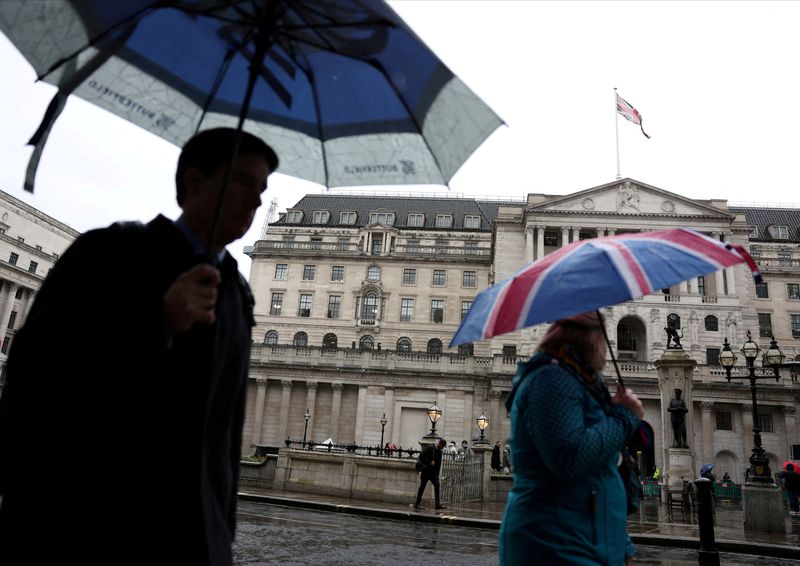By Shaloo Shrivastava
BENGALURU (Reuters) - The Bank of England will wait until next quarter to lower borrowing costs, according to median forecasts in a Reuters poll, although almost half of those surveyed said the central bank would cut interest rates in June.
In either case, the BoE would be moving around the same time as peers the European Central Bank (ECB) - widely expected to move in June - and the U.S. Federal Reserve which is predicted to trim rates in September.
Top BoE officials - Governor Andrew Bailey and Deputy Governor Dave Ramsden - have recently said British inflation was falling in line with the central bank's predictions and the risk of it getting stuck too high had receded, setting the stage for a rate cut.
Inflation was above the BoE's 2.0% target in March, coming in at 3.2%, but lower than February's 3.4% reading.
The BoE raised borrowing costs by 515 basis points to a 16-year high between December 2021 and August 2023 to cool inflation that peaked at 11.1% in October 2022.
All participants in the April 17-23 poll expected the BoE to hold Bank Rate at 5.25% on May 9 and median forecasts showed the first cut next quarter.
However, that outlook was on a knife's edge with almost 48%, or 30 of 63 economists, expecting a cut in Q3 while 31 forecast the first cut in June. The other two said November.
"It is between June and August, we are leaning slightly towards August on the basis that one of the key things the Bank is looking at is services inflation," said James Smith, economist at ING Financial Markets.
"If services inflation is a little bit stickier, I think that tilts the balance a little bit further towards August over June, but it's a pretty close call to be honest."
Median forecasts showed Bank Rate at 5.25% at end-Q2, 4.75% at end-Q3 and 4.50% by year-end.
Markets are pricing the first rate cut in August.
UPSIDE INFLATION RISKS
Banks that can bid directly at government bond auctions - known as gilt-edged market makers (GEMMs) - were almost equally divided on the timing of the first cut.
Of 15 GEMMs who participated, eight predicted the first cut in June while seven said August.
When asked what was more likely on the timing of the first rate cut - 73%, or 19 of 26 participants who answered, said later than they expected. The other seven said earlier.
"Should upside inflation risks crystallise over the coming months, akin to what we're seeing in the U.S., the start date for rate cuts could be pushed back yet again," noted Sanjay Raja, senior economist at Deutsche Bank (ETR:DBKGn).
However, when asked about the chance the BoE holds Bank Rate for the rest of the year, 23 of 24 economists who responded said "low" or "very low", one said "high", none said "very high".
Inflation was predicted to average 1.9% this quarter and next but rise above 2.0% in Q4 and stay around that level until at least the end of 2025.
Median forecasts showed inflation averaging 2.5% this year and 2.2% next.
The UK economy was expected to expand 0.4% this year, but accelerate to 1.2% and 1.4% growth in 2025 and 2026, respectively.
(For other stories from the Reuters global economic poll:)
